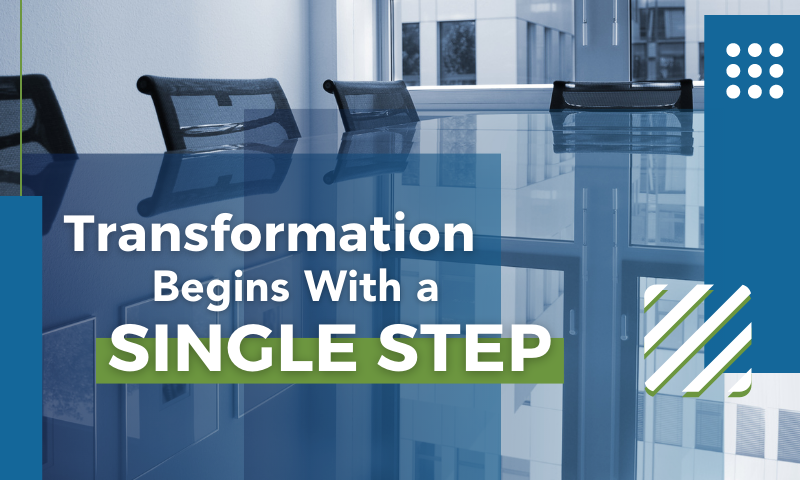This is part five of a 10-part master class series from Randy Hatcher, president of our parent company, MAU. This series will help you transform your company, gain a competitive advantage, and sustain long-term business success through staffing.
If you missed them, be sure to check out previous posts from this series. Here’s what’s been covered so far:
- Part 1: Workforce Transformation is the Key to Future-Proofing Your Business
- Part 2: 3 Signs Its Time to Rethink Your Business Model
- Part 3: Reimagining Outdated Workforce Models Post COVID-19
- Part 4: Full-Time vs. Temp-to-Perm Staffing: Which is Right For Your Business?
Today, we’ll get to the heart of why so many companies are failing to compete in today’s global economy and give you step-by-step instructions on how to start pursuing a more successful business blueprint today.
Saying Goodbye to an Outdated Workforce Model
I recently spoke with a friend of mine who is an executive with a successful Tier 1 international automotive supplier. At each of the eight plants he oversees, the normal business model is in place: manufacturing, finance, engineering, IT, administration, purchasing, quality, logistics, and HR.
His plants were doing a great job of assembling products for his customers, but there was one major issue—all of them focused on non-core work, and because the product was made elsewhere and then shipped to the plants for final assembly, the incredible overhead he had maintained for years was adding no value to the product.
His predicament brought up a number of questions in me: Why do so many companies fail to shift away from dated, inefficient business models? Why are so many executives reluctant to focus on the activities that would differentiate their companies and make them more competitive? Why are today’s leaders failing to engage in new, strategic thinking?
I think the answers to these important questions trace back to four main roadblocks:
It Seems Easier
For a number of companies, doing the same thing year after year—despite a steady decline in the marketplace—is better than risking the unknown.
They Don’t Know What They Don’t Know
Executives fail to question their own business models because they are unaware of other options.
Perceived Risk
Some leaders are worried that, if sweeping change occurred, their position would be affected.
They’re Busy
Many leaders continue to follow their old business blueprint because their packed schedules don’t afford them the time to design a new one. They can’t squeeze in another project, especially one that would necessitate overcoming the tremendous inertia of their company’s old blueprint.
Transformation Begins With a Single Step
So, how can today’s business leaders shift away from their dated, inefficient business models and compete in today’s global economy?
I believe it starts with a strategic approach to the workforce—a model that helps leaders focus all their time, resources, and creative efforts on their core activities by outsourcing their non-core activities to third parties that focus on them as their core.
>> Download The Core/Noncore Walkthrough Worksheet
To tailor such a model to your particular needs, you must first identify and classify all the areas in your organization.
Begin the process by walking the floors of your company and jotting down the different jobs, departments, and functions represented there. When you’ve completed your plant tour, move down your list and mark off your core business functions by answering the following questions:
-
- Which activities add unique value to your product or service and thereby differentiate you from your competitors?
-
- What are you known for?
-
- What are your customers willing to pay you for?
-
- If you had only one company dollar to spend in the next five years, which activities would you invest in to become more competitive?
As you answer the questions above, be sure to turn to your colleagues for their feedback and insights, and fine-tune your list. I’ve found that when executives finish identifying all their core functions for the first time, they are often amazed by the low total. In fact, at an average manufacturing facility, as few as 50 percent of the jobs and processes might belong in this category.
The remaining activities on your walk-through list are probably non-core and fall into one of two subcategories: critical or noncritical.
The non-core noncritical subcategory includes business activities that have little to do with the business itself but are necessary in some way. The non-core critical subcategory contains the remaining non-core jobs, those still handled in most cases by full-time employees, such as HR, payroll, accounting, IT, and maintenance.
Here’s a good visual breakdown:
Most of the items in both non-core areas are fair game for management by third parties that focus on them as their core.
We’re halfway through this 10-part master class series designed to help you transform your company, gain a competitive advantage, and sustain long-term business success. In part six, we’ll show you why outsourcing your non-core critical activities is the best way to secure a stronghold in the marketplace.
If you’d like to receive the remaining posts directly to your inbox, subscribe here. Or, if you’re ready to continue the conversation and learn more about how 3Ci and MAU can support your digital journey with individual consultants, end-to-end project planning, solution design, implementation, and more, schedule a call with our team.
{{cta(‘9985a020-84f5-4b43-9a45-a4674ffe3ce5’)}}
This blog post was inspired by and adapted from Randall Hatcher’s book, “The Birth of a New Workforce” and originally appeared here on the MAU blog.

